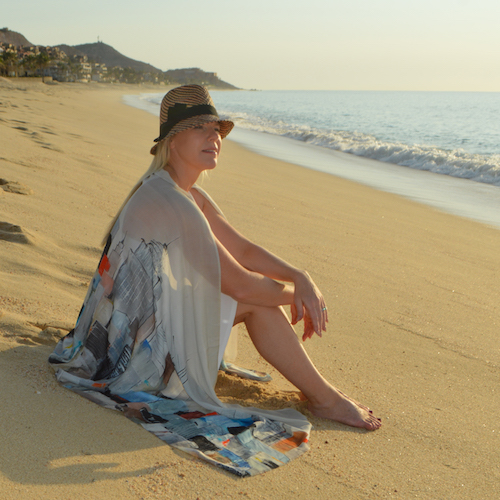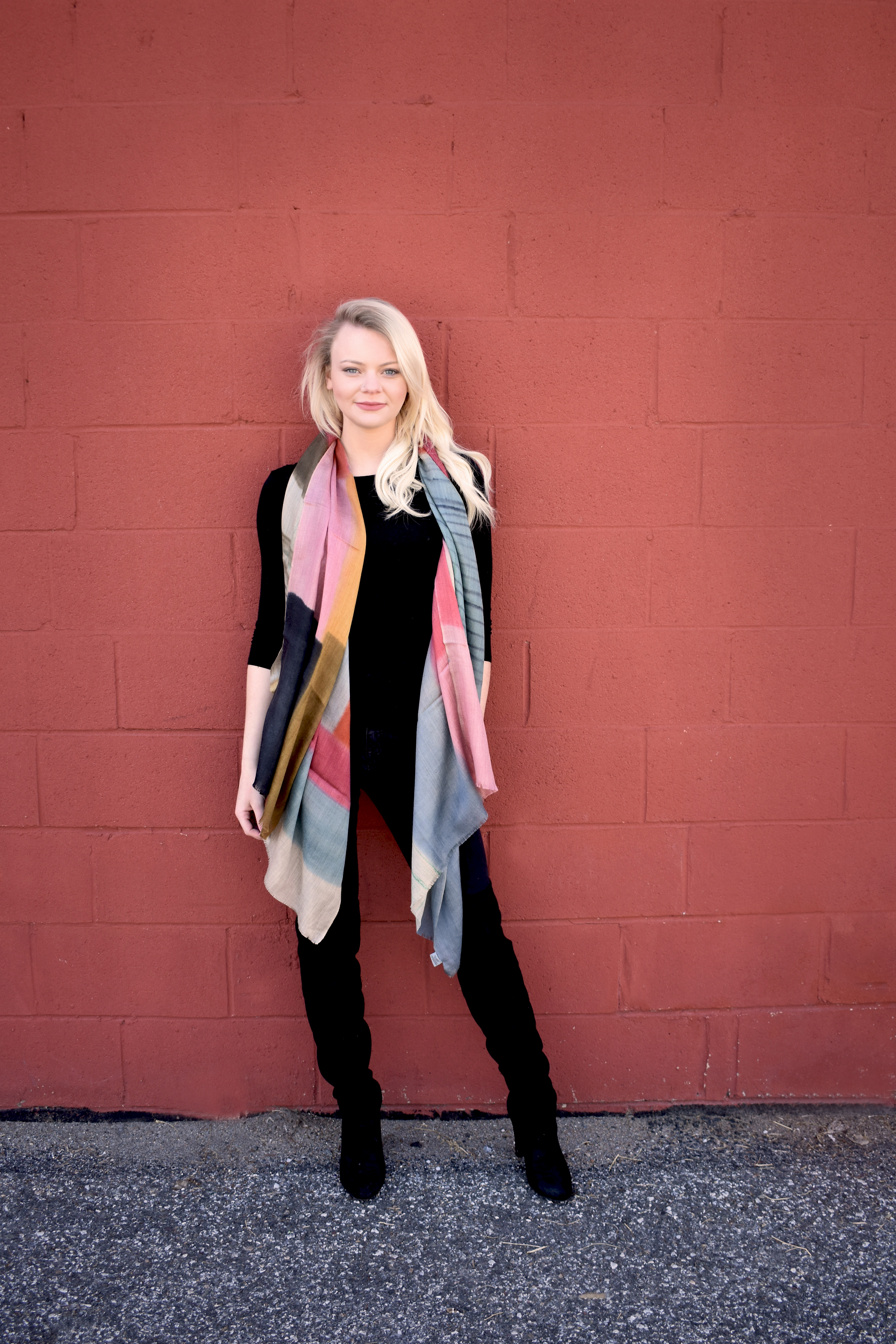Dupatta Scarves

With great expertise, handloom weavers interlace two distinct yarns to create unique and stunning designs. The hand woven technique is labor intensive but results in superior fabrics with a special hand feel. Our handwoven fabrics are made by skilled artisans in small village communities near Kolkota, India. The final design is screen printed and finished by hand.
 The term "dupatta" is derived from the ancient Indus River Valley Civilization's Sanskrit words meaning two strips of cloth. Early evidence of the dupatta can be traced to the sculpture of the Priest King whose left shoulder is covered with a kind of a scarf/veil.
The term "dupatta" is derived from the ancient Indus River Valley Civilization's Sanskrit words meaning two strips of cloth. Early evidence of the dupatta can be traced to the sculpture of the Priest King whose left shoulder is covered with a kind of a scarf/veil.
The modern "dupatta" is worn as a decorative accessory. Over time, fashion evolves and the style of the dupatta has also evolved with new textile materials and designs.

While there is no single way of wearing the dupatta, it is traditionally worn across both shoulders and around the head. However, the dupatta can also be worn like a cape around the entire torso. When not draped over the head in the traditional style, it may be worn with the middle portion of the dupatta resting on the chest like a garland with the ends thrown over each shoulder, or may be casually allowed to flow down the front and back.

In current fashions, the dupatta is frequently draped over one shoulder and even over just the arms. Another recent trend is the short dupatta, which is more a scarf or a stole, worn with Indo-Western clothing.
Essentially, the dupatta is often treated as an accessory in current urban fashion, and is an ideal choice for an appropriate head covering when entering a church, mosque, synagogue or other similar location.

